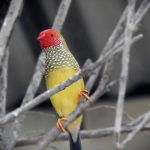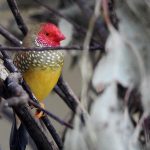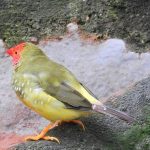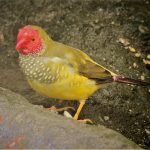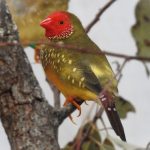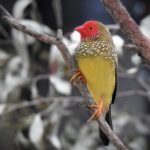STAR FINCH
Star Finches are known for their striking and vibrant plumage. They have a mix of bright red, yellow, and black colors on their bodies. Their most distinctive feature is a white-spotted pattern on their wings, which resembles a star, giving them their name.
These finches inhabit a variety of habitats in northern and eastern Australia, such as grasslands, savannas, open woodlands, and wetlands. They are commonly found in areas with tall grasses and scattered shrubs, where they can find both food and shelter.
Star Finches are social birds and are often seen in small flocks. They are known for their charming behavior, including their courtship displays and interactions within the flock.
Their diet primarily consists of seeds, especially those from grasses. They use their strong, conical beaks to crack open seeds and access the nutritious interior. They are also known to feed on insects and other small invertebrates.
Star Finches construct small cup-shaped nests in bushes or grasses. The female typically lays 4-6 eggs, and both the male and female take turns incubating them. After hatching, the parents share the responsibility of feeding and caring for the chicks.
While Star Finches are not considered globally threatened, their populations can be affected by habitat loss due to urbanization, agriculture, and altered fire regimes.
There are several recognized subspecies of Star Finches, each with subtle differences in their plumage and range. For example, the Red-faced Star Finch and the Masked Star Finch are two subspecies that exhibit variations in coloration.
These finches are not particularly known for their melodious songs, but they do have a distinctive, soft chattering call that they use for communication within the flock.

